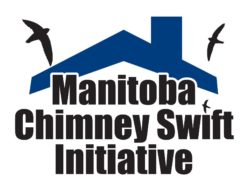 Thank you to everyone who went out on a cold, windy, damp and not especially pleasant Sunday evening to count swifts. The good news is that we have reports from 21 chimneys, a phenomenal effort given the conditions. The bad news if that only 5, yes 5, of the monitored chimneys reported an entry by Chimney Swifts. This raises the question question, is this bad news for the swifts or merely a temporary blip? We shall look into this in the coming blog.
Thank you to everyone who went out on a cold, windy, damp and not especially pleasant Sunday evening to count swifts. The good news is that we have reports from 21 chimneys, a phenomenal effort given the conditions. The bad news if that only 5, yes 5, of the monitored chimneys reported an entry by Chimney Swifts. This raises the question question, is this bad news for the swifts or merely a temporary blip? We shall look into this in the coming blog.
We start our round of activities in the west and Brandon. Margaret and Millie recorded a pair entering their usual chimney and also saw a third bird in the air. New volunteer David took on a new site on Princess Street but after 3 visits has still to see activity. Further north, John Hays dropped in at the Riding Mountain Visitor Centre earlier in the week, recording entries by 2 swifts and also noted a second pair in the area. Still further north, Ken in Dauphin experienced the rare jolt of zero entries.
In Portage, Gord and co were left disappointed, zero birds in the air and no entries at the United Church and Correctional Facility. Janice had recorded entries by 5 swifts on May 15th at the church. There were also no swifts in Southport on May 27th. Mike and Michele had been experiencing much success in St Francois-Xavier this year. That is until bleak Sunday and there were no swifts around the church during the roosting hour.
In Selkirk, 7 swifts were counted entering the large stack by Gerald and Robert (hurrah). The other chimneys in the Mental Health Centre were empty. 4 swifts were noted later in the evening around the large stack but didn’t enter. Cam and Diann had seen swifts in Lac du Bonnet but again were hit by a zero count on Sunday. David in La Broquerie saw no sign of swifts, although he did count 3 swifts enter the Steinbach chimney on Friday evening.
In South Winnipeg, Blaire has monitored the church and the behavioural foundation in St Norbert with no entries, however she is seeing swifts in the evening. Frank and Jacquie did see 4 entries in 2 chimneys on Sunday evening at Providence College.
In Winnipeg there were also mixed results. Lauren trying the West End Commons site, not previously monitored for swifts saw nothing, as did John up at McDermot, Barb and Rob at the University of Manitoba and Kelly-Anne on Academy. Tim, Patricia and Marie-Eve watched swifts appear as if from nowhere in Osborne Village around 8:46 but then trail off in a line, presumably to take up residence in a communal roost somewhere nearby. At least one of the chimneys being monitored that evening had previously had roosting swifts this year. David at Assiniboine School wrote:
‘I arrived at the chimney at 8:16 and immediately saw a group of 7 swifts fly over the chimney and then enter. A minute later another 7 appeared and then entered. So 14 had entered by 8:17. Shortly after at 8:20 a group I estimated at 30 began circling the school yard and it grew to about 50 but didn’t enter until 8:35 much to my consternation. I was trying to video them since I knew they would be hard to count and so I kept lifting my iPad and lowering it when they didn’t enter. When they did finally enter it was one bunch of 26 in 7 seconds and one bunch of 25 in 3 seconds. As soon as I stopped the video 3 more entered. By 8:53 104 swifts in total had entered. The last 2 entered at 9:05. Grand total 106. I mention the 104 by 8:53 because the “normal roosting hour” with sunset at 9:23, would begin at 8:53 and these birds all entered before that.’
So Assiniboine School had increased from 77 swifts on the 24th to 106 on the 28th. However this is well below the season peak of 210 on May 18th. Another interesting thing happened yesterday at the zoo. Tim and Patricia were giving Chimney Swift presentations to students at Assiniboine School on Monday (we’ll post photos later this week). At lunchtime, on arriving back from a quick bite to eat, there were large numbers of swifts swirling around the chimney. At 12:04, 3 swifts entered the chimney. Within a couple of minutes, around 66 had entered. So what is going on?
Firstly, this is not a new behaviour, and has been noted in Manitoba before. Ken Wainwright in Dauphin writes that:
‘A few years back, we were at a gas bar that used to be 1/2 block from the Dauphin roost in the early afternoon, weather was overcast, maybe rain in area (it was a few years back now) and we heard and then saw swifts going down the roost chimney.’
Lewis Cocks has also noted that:
‘In previous years, I’ve witnessed Chimney Swifts on several occasions flying fast and low over water at Fort Whyte Alive during “miserable” cold very windy days when some insects were emerging from the ponds. They were accompanied by many Swallows and a few Night Hawks. It was amazing to watch them flying and especially amazing to watch them flying into the strong north wind with apparent ease.’
Barb Stewart also added some very valuable thoughts
The literature does speak to swifts withdrawing in prolonged bouts of inclement weather to roost and go into torpor. It is an energy saving mechanism. It does not surprise me at all that the swifts would try to feed today then “decide” to roost up when the lack of insects became an issue; as a reference, the City of Winnipeg uses 12 C as a threshold for spraying insecticide.
And:
‘In my experience, I have seen one “early” daytime entry event that was weather related. An August premigratory group in St Adolphe started grouping up in advance of a fast moving, nasty t-storm which was setting up. I made it down in time to see ~19 swifts dive into the Church. After about an hour the electricity stopped, the rain backed off, and the swifts came out.’
Finally, Rob Stewart adds this:
‘It is probably a truism, that the more you look at something the more complicated it gets. The short answer is as Barb said: it was likely too miserable to be out. But what does miserable mean?
Too cold for bugs to be flying?
Zammuto and Franks 1981 say
Weather conditions seemed to affect reentry into the roost. On cold or rainy mornings, over 90% of the swifts that left a chimney reentered it within 30 min. On these mornings, some were reentering while others were leaving. A shortage of insects in the air may also cause reentry. The number of insects in flight was likely very high at daybreak but probably declined sharply after sunrise (McClure 1938; Glick 1939, 1957). Reduced aerial prey may have caused the swifts to reenter the roost-site at sunrise (on the average of 11 min after departure) where they remained until later in the morning.
At some stage it is also likely that, bugs or no, the birds themselves can’t stay warm. Zammuto and Franks also said that some cold mornings more birds ‘returned’ than left and figured they were coming from other smaller roosts to get a better heat source (more birds).
So I don’t know the details but it makes perfect sense for the birds to go home when it is more advantageous to do so than to continue flying and a negative energy balance is the avenue for making that decision.’
It therefore appears likely that the swifts on Monday were resting due to either a lack of food, or the need to conserve energy, or both. The same explanation might explain why many of you saw few or no birds on Sunday. The likelihood is that this was indeed a blip and Thursday evening we will see a return to normality if the improved weather holds. The key may well be Assiniboine School. If numbers here drop-off markedly from Sunday then this would suggest a redistribution by many swifts to their nesting chimneys – swifts which as the paper quoted by Rob above suggests, were coming to the large roost to retain warmth. It is also very likely that for many of you, your swifts were already tucked up in their chimney for the evening and hoping for better the following day.
We will send out details of NRMP evening 3 after June 1 – for now thank you for your continued efforts on behalf of MCSI.
– MCSI
